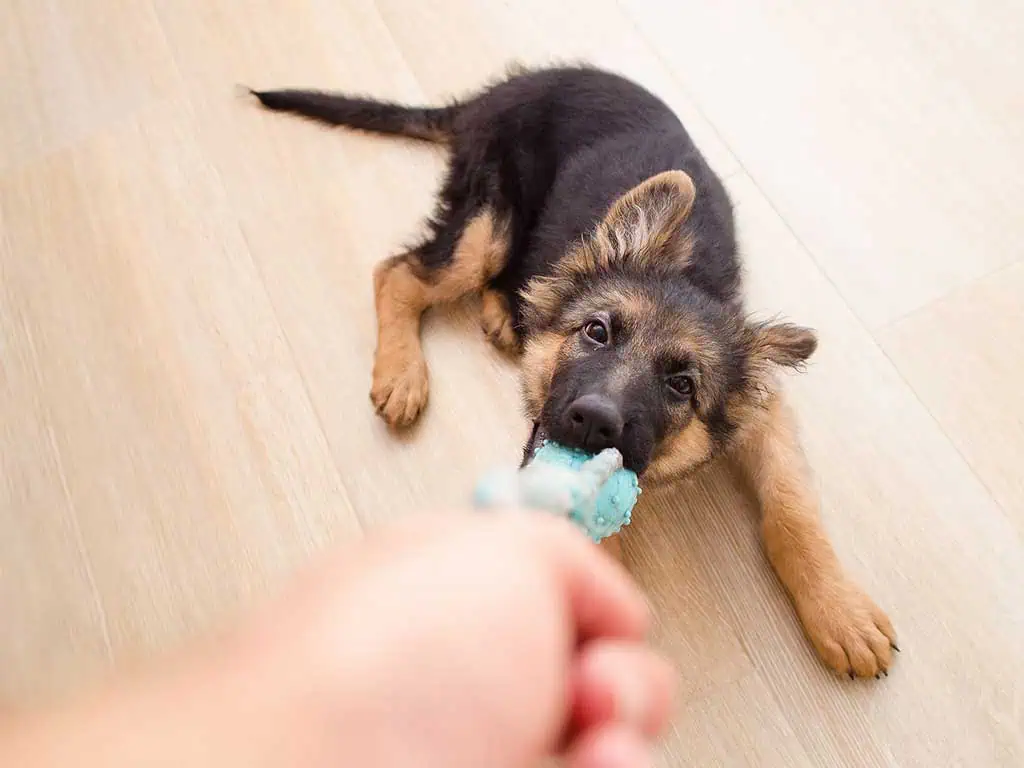
Introduction
If you’ve ever asked yourself how to calm a hyper dog, you’re not alone. Many pet owners struggle with dogs that have endless energy—whether it’s zooming around the house, jumping on guests, or barking excessively. While some hyperactivity is natural, especially in puppies, it can become overwhelming without the right guidance. The good news? With proper routines, training, and a calm environment, you can help your dog stay balanced and happy.
This article will walk you through the causes of hyperactivity, practical techniques to reduce it, and long-term strategies to keep your pup calm.
Table of Contents
Why Dogs Get Hyperactive
Hyperactivity is often misunderstood as misbehavior, but it usually stems from unmet needs or excess energy. Common causes include:
- Lack of exercise: Dogs with pent-up energy will often show it through excessive barking, chewing, or running.
- Boredom: Without mental stimulation, dogs can act out.
- Inconsistent routines: Irregular feeding or walking times can make dogs restless.
- Breed traits: Some breeds, like Border Collies or Huskies, are naturally high-energy.
- Lack of training: Without clear boundaries, dogs may not know how to settle down.
Recognizing the “why” behind the behavior is the first step in learning how to calm your hyper dog effectively.
Signs Your Dog Is Overly Hyper
A little energy is normal, but here are signs your dog may be too hyper:
- Constant pacing or inability to relax.
- Jumping on people or furniture excessively.
- Barking or whining for attention.
- Chewing furniture, shoes, or household items.
- Running in circles (zoomies) far too often.
If these behaviors are frequent, your dog likely needs a change in routine.
Daily Exercise and Routines
The most effective way to calm a hyper dog is through consistent physical activity. Exercise helps burn excess energy and keeps your pup satisfied.
Walking and Running
Aim for at least two daily walks. If your schedule is busy, short but frequent walks are better than one long walk. Active breeds may also need running sessions or fetch games in a safe space.
Structured Playtime
Interactive games like fetch, tug-of-war, or frisbee allow your dog to release energy while bonding with you.
Consistent Feeding
Dogs thrive on predictability. Feeding them at the same times daily prevents restlessness and creates a calming routine.
Mental Stimulation Activities
A tired mind is just as important as a tired body. Dogs that lack mental stimulation are more likely to show hyper behavior.
- Puzzle toys: Challenge your dog with treat-dispensing puzzles.
- Hide-and-seek: Hide treats around the house and let your dog sniff them out.
- Training sessions: Teach new tricks in 5–10 minute sessions daily.
- Scent games: Engage your dog’s nose with tracking exercises.
These activities keep your dog engaged and reduce hyper tendencies.
Training and Behavior Management
Training is crucial if you want to know how to calm a hyper dog in the long run.
Teach “Settle” Commands
Commands like sit, stay, and down help redirect energy. Reward calm behavior with praise or treats.
Redirect Jumping
If your dog jumps on guests, teach them to sit instead of rewarding the jumping with attention.
Crate Training
When done positively, crates can give your dog a safe, calm space to relax.
Creating a Calming Environment
Sometimes the environment contributes to hyperactivity. Adjusting your home setup can help.
- Reduce noise: Keep loud music and TV at moderate levels.
- Safe space: Provide a comfortable bed or crate away from high-traffic areas.
- Relaxing aids: Consider calming music for dogs or anxiety wraps.
- Monitoring when alone: Devices like smart cameras help track behavior and identify triggers.
When to Seek Professional Help
If you’ve tried exercise, routines, and training but your dog still seems excessively hyper, consult a professional. Options include:
- Veterinarian checkup: To rule out health issues like hyperthyroidism.
- Certified trainer: For structured obedience training.
- Canine behaviorist: For deeper behavioral problems like anxiety-driven hyperactivity.
FAQ How to calm a hyper dog
How long does it take to calm a hyper dog?
With consistent routines, many dogs show improvements within weeks, but some may take months depending on age and breed.
Do certain breeds stay hyper forever?
High-energy breeds like Huskies and Terriers may always be more active, but proper exercise and training help manage their energy.
Can food affect hyperactivity?
Yes. Diets with excessive fillers or sugar-like ingredients can contribute to restlessness. High-quality dog food promotes better balance.
Should I ignore my dog when they’re too hyper?
Ignoring hyper behavior can help if it’s attention-seeking. But balance it with rewarding calm moments, so your dog learns which behavior gets attention.
Conclusion: Building Calm Into Your Dog’s Life
Learning how to calm a hyper dog requires patience, structure, and consistency. By combining daily exercise, mental challenges, training, and a calming environment, you give your dog the balance they need to thrive.
Remember: hyperactivity is not bad—it’s energy waiting to be channeled. A calm, happy dog not only improves your home environment but strengthens the bond you share.

